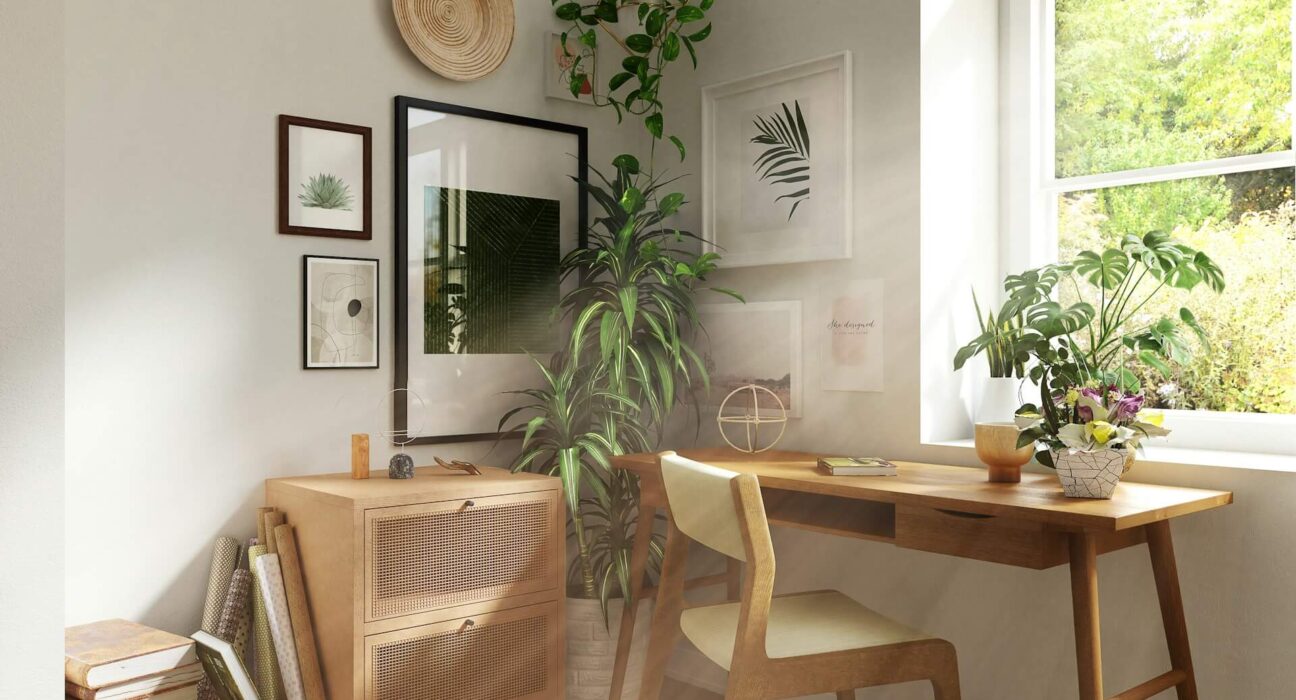The real estate industry is undergoing a profound shift, with sustainability at the heart of the transformation. As consumers become more environmentally conscious, and as the effects of climate change become increasingly evident, the demand for eco-friendly living spaces is on the rise. From cutting-edge technology to innovative design, sustainable homes are not just a trend—they are becoming the new standard. In this comprehensive exploration, we will uncover the emergent sustainable practices that are reshaping the real estate landscape.
The Genesis of the Green Home Movement
Sustainability in real estate is not a new concept, but it has evolved dramatically over the years. The green home movement began as an offshoot of the broader environmental movement, with a focus on reducing the ecological footprint of individual homes. The early innovations centered around energy efficiency, using materials that were less harmful to the environment, and incorporating renewable energy sources.
The Pioneers of Eco-Home Design
Early on, certain architects and developers started pushing the boundaries of what could be considered a sustainable dwelling. They championed concepts like passive solar design, which maximizes the use of sunlight for heat and light, and the use of recycled and locally-sourced materials. These pioneers laid the groundwork for what would become the sustainable home of the future.
Technological Advances Driving Sustainability
The past decade has seen a surge in technological advances that have revolutionized the sustainability of homes. From smart home systems that optimize energy use to advanced building materials that improve insulation, technology is at the forefront of the green home movement.
Integration of Smart Home Technology
With smart home technology rapidly evolving, homeowners can now manage their energy consumption more effectively than ever before. Thanks to the latest systems, adjusting lighting, heating, and cooling has become a breeze, resulting in significant energy savings across the board. But that’s not all. As technology advances, home automation has extended beyond energy conservation to water management, with smart irrigation systems that take into account the weather conditions and even detect leaks in real time. Marcin Drozdz, a leading expert in smart home technology, believes that these innovations are essential for sustainability and will only continue to grow in popularity in the years to come.
Advanced Building Materials
New building materials have also played a crucial role in making homes more sustainable. Innovations like aerogel insulation, which provides exceptional thermal performance with minimal environmental impact, or phase-change materials that can store and release energy to maintain optimal indoor temperatures, have become game-changers in home construction.
Sustainable Design Principles and Architecture
Sustainable design principles are reshaping the way we think about home architecture. These principles are not just about reducing environmental impact; they also focus on creating spaces that are healthier and more comfortable for residents.
Biophilic Design
One of the most influential design trends in recent years is biophilic design, which seeks to connect people more closely to nature. Incorporating natural elements like plant walls, skylights, and green rooftops can improve air quality and mental well-being, while also providing insulation and reducing the urban heat island effect.
Passive House Standards
Passive House standards, which were developed in the 1990s, are becoming increasingly relevant in home construction. These ultra-efficient buildings require very little energy for heating or cooling, thanks to airtight construction, high levels of insulation, and energy recovery ventilation systems.
The Rise of Renewable Energy in Home Construction
Renewable energy sources are no longer just an add-on for the environmentally conscious homeowner they are becoming integral to home construction. Solar panels, wind turbines, and geothermal systems are now common features of sustainable homes.
Solar Power Integration
Solar power is the most widely adopted renewable energy source in home construction. Advances in solar panel technology have made them more affordable and efficient, allowing homeowners to generate their own clean energy and even sell surplus electricity back to the grid.
Wind and Geothermal Energy Solutions
While less common than solar, wind and geothermal energy solutions are gaining traction. The integration of small wind turbines or geothermal heat pumps can greatly reduce a home’s reliance on traditional energy sources, even in areas where sunlight is less abundant.
Sustainable Communities and Urban Planning
The concept of sustainability is not limited to individual homes it also extends to entire communities and urban planning. Eco-districts, which seek to create self-sustaining neighborhoods, are becoming testbeds for innovative sustainable practices.
Mixed-Use Development and Transportation
Mixed-use developments that combine residential, commercial, and recreational spaces reduce the need for car travel, cutting down on emissions. Furthermore, the integration of public transportation and the promotion of walkability can make a significant impact on the carbon footprint of a neighborhood.
Water Management and Ecosystem Restoration
Sustainable communities focus on responsible water management, with features like on-site water treatment, rainwater harvesting, and even the restoration of local ecosystems. These practices not only reduce strain on municipal water systems but also contribute to the health of the surrounding environment.
Financial Incentives and Market Demand
The shift toward sustainable real estate is not just driven by consumer demand and technological innovation—it is also fueled by financial incentives. Governments and financial institutions are offering a range of incentives to encourage the adoption of sustainable practices in home construction and ownership.
Tax Credits and Rebates for Green Building
Many jurisdictions offer tax credits and rebates to developers and homeowners who build or retrofit their homes to meet certain green building standards. These incentives can make sustainable homes more affordable and encourage greater adoption of green practices.
Growing Market Demand for Eco-Friendly Homes
Market demand for eco-friendly homes is growing, and with it, home values are beginning to reflect the sustainability of the property. Studies have shown that homes with green features not only sell for higher prices but also tend to sell faster than their conventional counterparts.
Overcoming Challenges in Sustainable Real Estate
While the growth of sustainable real estate is promising, there are still significant challenges to overcome. High upfront costs, a lack of awareness, and resistance to change are just a few of the obstacles that the industry faces.
Cost Considerations and Financing Challenges
The upfront cost of building or retrofitting a sustainable home can be a barrier for many buyers and developers. Financing options like green mortgages and energy-efficient home improvement loans are helping to address this challenge, making sustainable real estate more accessible.
Education and Awareness
Many consumers and professionals in the real estate industry are still not fully aware of the benefits and possibilities of sustainable practices. Education and awareness campaigns are critical in driving the adoption of green building and design.
Policy and Regulatory Hurdles
Inconsistent or outdated policies and regulations can also hinder the progress of sustainable real estate. Advocacy for supportive legislation and the engagement of policymakers are essential in creating an environment where green practices can thrive.
The Future of Eco-Friendly Homes
The future of real estate is undeniably green. As technology continues to advance, and as society becomes more attuned to the impacts of climate change, sustainable homes will become the norm rather than the exception. The industry is on the cusp of a new era, where every new home is built with the environment in mind.
The Integration of AI and Big Data
Artificial intelligence (AI) and big data are poised to play a significant role in the future of sustainable real estate. These technologies can be used to optimize home energy use, predict maintenance needs, and even impact the design of new sustainable materials.
Global Collaboration for Sustainability
Addressing the environmental challenges we face requires a global approach. The real estate industry is increasingly looking to international collaboration to share best practices, research, and technologies that can contribute to a more sustainable built environment.
The Role of Individual Action
While large-scale changes are crucial, individual action also plays a vital role. From choosing to live in a sustainable home to making small changes in our daily lives, each decision we make can contribute to a more sustainable future.
Sustainable practices are shaping the real estate industry in profound ways. From the design and construction of individual homes to the planning of entire communities, the integration of eco-friendly principles is creating spaces that are better for the environment and for the people who live in them. The path to a sustainable future is complex, but the real estate industry is demonstrating that it is up to the challenge, and that the homes of tomorrow will be smarter, healthier, and more in harmony with the natural world.







